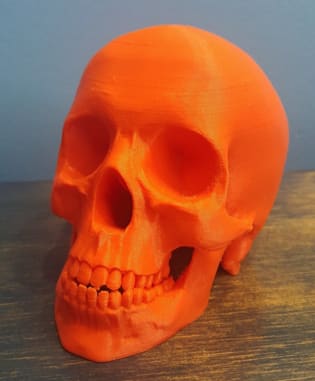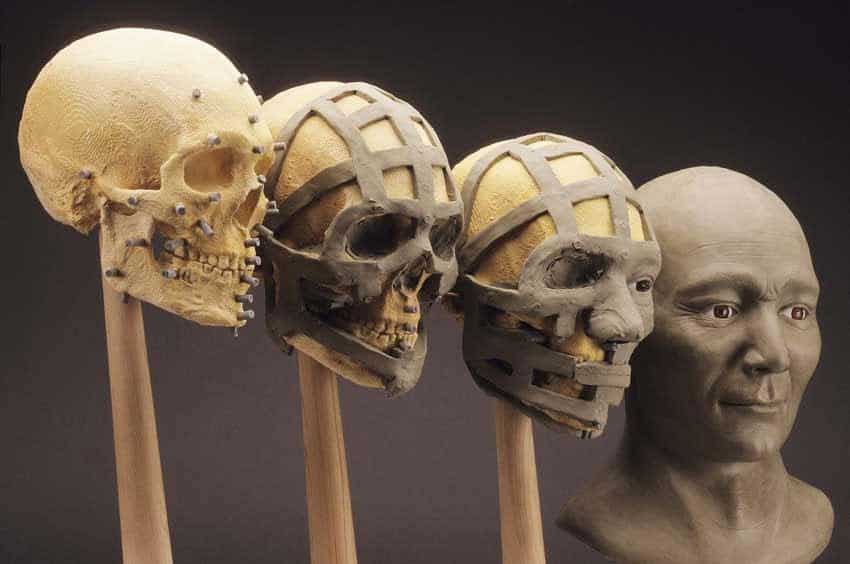The use of physical models in court is not a new concept. For decades now, small-scale models of crime scenes and other pieces of evidence have been entered into court to show jurors where and how a crime may have been committed. However, the use of 3D printing in the investigation and court purposes is still new. This may be due to a lack of knowledge of complex technology, cost, and what can be done with 3D printing. It makes you question why people haven’t seen the benefit of 3D printing for use in court.
One reason why 3D printing for forensic use is not such common practice is the fact that close range scanners that accurately record smaller pieces of evidence like skulls, bones, and shoes are not commonly owned or used by police departments. Fortunately, a local 3D printing and 3D scanning service provider with equipment capable of digitizing a particular piece of evidence should be in close proximity.
The first step to creating a 3D printing object is to be able to digitize the object into a 3D model. The second step after an object has been documented in 3D is to ensure that the model is made into a continuous volume without any “missing pieces”. The final step is the actual printing process itself.
Now that the 3D printed model is made. It can be used in many applications which include training aids, investigative tools, test pieces, or as evidence submitted in court so that jurors may physically hold a replica of an important object in their hands.
Below are some further examples of practical applications for 3D printing in the forensics field.
Footprints
Creating replicas of pieces of evidence is not a new practice in forensics. Investigators and scientists have used materials such as dental stone to create casts of footprints, Mikrosil for tool mark impressions, and other materials that can replicate the surface of an object either by impression-transfer or curing, for years now. Although footprint casting with dental stone is a common technique, it is not always practical when the substrate material is prone to deformation or when the substrate is rapidly deteriorating.
On a crime, scene time can often be a factor and in many remote areas where resources and equipment may not be readily available, first responders have an opportunity to capture photographs of evidence using nothing more than a digital camera. By utilizing advanced photogrammetry software such as PhotoModeller Scanner or 3DReality, a dense and accurate surface model can be created. It is important to note that the 3D model is a replica of the footprint and not a surface that is cast as a “negative”.
The created digital model can be easily converted into a readily acceptable format for 3D printing and in the absence of more adequate casting materials, time, or resources, laser scanning or photogrammetry can prove to be beneficial.
Facial Reconstruction and Identification
When skeletal remains are found at a crime scene and the skull is intact, it is possible to utilize the skull to obtain information about the type of person who was found. Gender and race can be determined from various landmarks on the skull to assist with the identification of the individual. At the Central Identification Laboratory of the Joint POW/MIA Accounting Command (JAPC), they have a mission to identify the remains of American soldiers from past military conflicts. Among the lab’s tools for forensic identification are multicolor 3D printers. “For example, JPAC prints a model of a skull using digital information from CT scans of the remains. The 3D printed skull is then photographed from multiple angles and superimposed with photographs of known soldiers to gauge potential matches, a process called “skull photographic superimposition”.
It should be mentioned that these techniques need not be obtained from a CT scanner since photogrammetry or other 3D scanning systems are capable of capturing the data at different levels of detail depending on the need. “ Figure 2 shows a skull model created solely using photogrammetry. Photographs were taken from around the skull in small increments and, once processed, a highly detailed 3D model is created. This can subsequently be converted to an STL file format that is universally accepted across almost all 3D printing systems.”

Fingerprint Examination
Another area in forensic science where 3D printing may prove to be useful is fingerprint examination. Small scanning systems allow for a suspect’s fingerprints to be captured fully in 3D. Traditionally fingerprints at crime scenes are captured through the use of powder and tape, they are eventually scanned or photographed as a high-resolution image. “The source of the prints are all curved and contain highly detailed ridges and pores.” The resulting 3D model is able to capture all the ridge detail and can be used for investigative comparison purposes.
In court, jurors can benefit from a large-scale 3D replica of a suspect’s fingerprint by being able to easily visualize the 3D replica and they also have the benefit of haptic perception. Fingerprints are a good example of how we can take something small and create it at a much larger scale to bring out specific details, which would normally not be easily visible by the naked eye. Fingerprint examiners in training benefit from having the ability to visualize and feel what an enlarged 3D replica of a person’s finger looks like before making a flat print comparison.
Accident Reconstruction
Vehicle accidents represent an area where much is disputed and litigated on a regular basis. In many instances it takes more than just photographs to do a proper investigation. It is possible to scan vehicles just as they are found at an accident scene to give a more accurate account of how vehicles may have been found in their final rest positions, as more police agencies adopt laser scanners.
In the courtroom, a witness can physically hold a model of a crushed car and point out areas that were of importance. Physical 3D replicas can preserve some evidence for future viewing by juror and lead to more accurate decisions. Using physical 3D replicas crush and the extent of damage can also be shown to jurors.
Structural and Industrial Accidents
There is often attention and investigation into the cause and origin of large scale and structural industrial accidents. Haag 3D has used laser scanners to document crane disasters where a large structural member has failed.
“In a recent case, Haag 3D was involved in a project involving the failure of a crane where the combination of wind plus other man-made effects caused a massive failure of the forward portion of the lattice boom. The crane and building were recreated using 3D printing and then subsequently placed in a wind tunnel to simulate the conditions and effects of wind.”
“Other forensic uses of 3D printing are extensive and are open to creativity. Some of these might include:
- Printing a scale model of the first floor in a home where a crime was committed.
- Recreating a physical copy of a weapon found at a crime scene.
- Displaying bullet trajectories through the 3D scanned articles of clothing.
- Creating a model of a suspect’s dentition and showing how well a bite mark aligns.”
- Printing a scaled model of a collapsed building due to a bombing.
- Creating test pieces of a piece of evidence that might be used in an experiment.”






